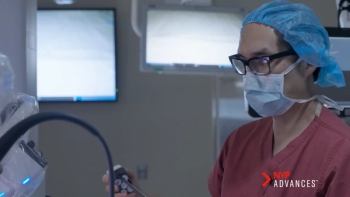
HPV 31 poses a higher risk of precancer as compared to HPV 18. You screen for HPV 18, so why not HPV 31?
This could change how you view
HPV testing.
Tianna* is 35 years old and lives a healthy lifestyle. She believes in the importance of cervical cancer screening and has had regular screenings ever since she turned 21. Her cytology results were always normal, with no sign of high-risk HPV infection.
Tianna was recently offered an HPV test that can individually identify more high-risk HPV types. Her cytology results were once again normal, but her HPV test results showed an infection with HPV 31. And because she is ≥30 years, has HPV 31 and normal cytology, her personalized immediate risk of CIN3+ is 8.4%.1 Based on this risk, she was referred to colposcopy, per the national ASCCP guidelines recommendation.2
Most FDA-approved HPV tests can only individually identify HPV 16 and HPV 18,3-7 which would have underestimated Tianna’s immediate CIN3+ risk as only 2.1%8 and would have likely led to a 1-year follow-up recommendation instead of an immediate colposcopy.2
Different HPV types carry different risks for progression to cervical cancer and it is important to individually identify the HPV types that pose the highest risk. By using a test that can individually identify more HPV types, including HPV 31, you offer your patients a more precise cervical cancer risk assessment compared to an HPV test with grouped results.
Does your HPV test reveal HPV 31?
*Names and/or medical information presented on this page do not represent real people or clinical information.
References: 1. Stoler MH et al. Gynecol. Oncol. 2019;153(1):26–33. 2. Perkins RB et al. J Low Genit Tract Dis. 2020;24:102–31. 3. digene® HC2 High-Risk HPV DNA Test Package Insert. 4. Aptima™ HPV Assay US Package Insert. 5. Cervista™ HPV HR US Package Insert. 6. cobas® HPV for 4800 System US Package Insert. 7. cobas® HPV for 6800/8800 System US Package Insert. 8. Egemen D et al. J Low Genit Tract Dis. 2020;24(2):132–43.
Download the brochure to learn more.
Newsletter
Get the latest clinical updates, case studies, and expert commentary in obstetric and gynecologic care. Sign up now to stay informed.






